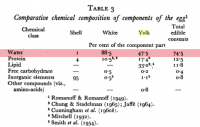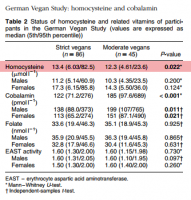Tenacity
Member
- Joined
- Mar 12, 2016
- Messages
- 844
I think it tells us that it's a complete food, yet has a relatively high tryptophan ratio:
'This man ate 25 eggs per day apparently due to an obsession tied to mental problems. Repeated attempts at changing his behavior were unsuccessful. He said: “Eating these eggs ruins my life, but I can't help it.”' ―Ned Kock
'He was an articulate, well-educated elderly man, healthy except for an extremely poor memory without other specific neurologic deficits...' ―Ned Kock
You think the tryptophan might have exacerbated his mental problems?





